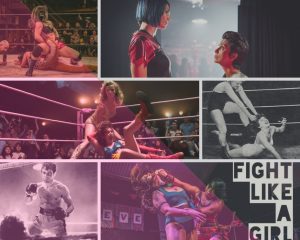My creative practice has evolved over the last 12 weeks, particularly in my understanding of audio-visual storytelling. I aimed to bring my prior experience with writing and audio practice to my screenplay writing and reading experience. With this and the concepts encountered over this period, plus a new creative flair, I feel that I have a well-founded understanding of screenwriting conventions and industry.
practice has evolved over the last 12 weeks, particularly in my understanding of audio-visual storytelling. I aimed to bring my prior experience with writing and audio practice to my screenplay writing and reading experience. With this and the concepts encountered over this period, plus a new creative flair, I feel that I have a well-founded understanding of screenwriting conventions and industry.
I benefited from exercises of “showing not telling“, which encouraged me to visualise and convey images effectively with my words. Analysing screenplays and media without dialogue was confronting at first, but quickly grew on me. Here, my interest in the visual capacity of action words grew. Working with solo scenes was an incredibly liberating experience, helping me grow comfortable with my choice of words. My light bulb moment came when we shared these scenes with a peer and swapped perspective, writing a scene in the world created by our peer. I consequently connected with my theme, characters and audio-visual storytelling elements for my final project (namely, my juxtaposition of rose-tinted lighting and grey scale colouring to signify the blur between reality and fiction).
Reflecting on my final project, I am pleased that I was able to turn a theme that I have worked with previously (mostly in documentary form: see this video and audio clip below) and one that I am passionate about, into a written piece of audio-visual storytelling. I enjoyed exploring character proximity and relationship with written word, and creating a unique ‘world’ with audio-visual elements. There are other factors I considered playing with in my writing (using wrestling match narration to dictate the action sequence), but I am ultimately pleased with how I communicated meaning and feeling with minimal dialogue. I was enthusiastic about exploring sound elements (voice/crowd cheering, echoes, etc.) in my writing and I would have liked to toy with the practicality of these sounds more in work-shopping sample audio, dipping my toes in the next stage of the production process. However, I feel very fulfilled in this writing capacity. I was also pleasantly surprised to see my visual metaphor of colour (albeit cliché) come to life while sitting at the round table in our final readings.
I was challenged by early encounters with screenplay structures and conventions to think differently; I was faced with stylistic measures that I had not yet worked with. Unpacking McKee and other authoritative voices left me with somewhat unresolved concerns about screenwriting conventions. Having shared in the wisdom of an active industry person, Catherine McMullen, it was affirmed to me that screenwriting need not be so conventional. I felt confident to explore my personal voice, through language, utilising clichés, visual metaphors, thematic conceptualising, and more.